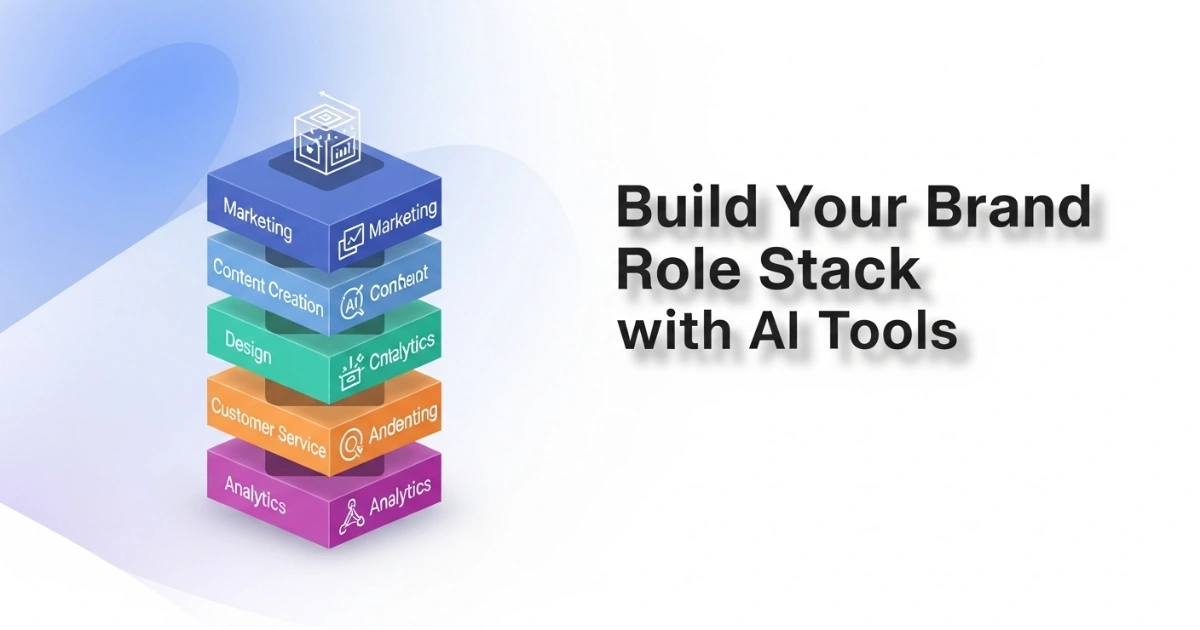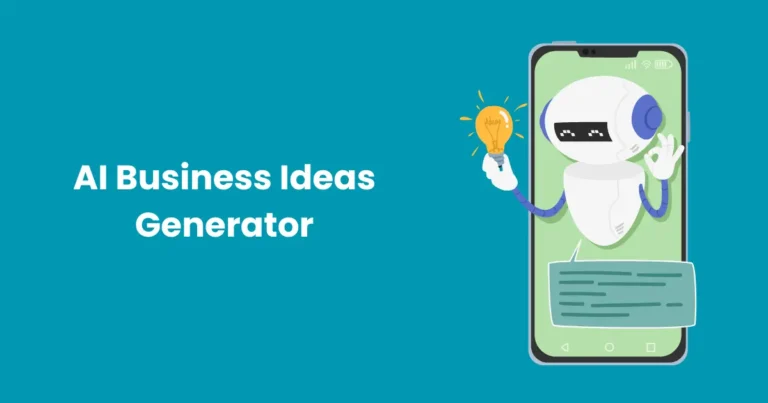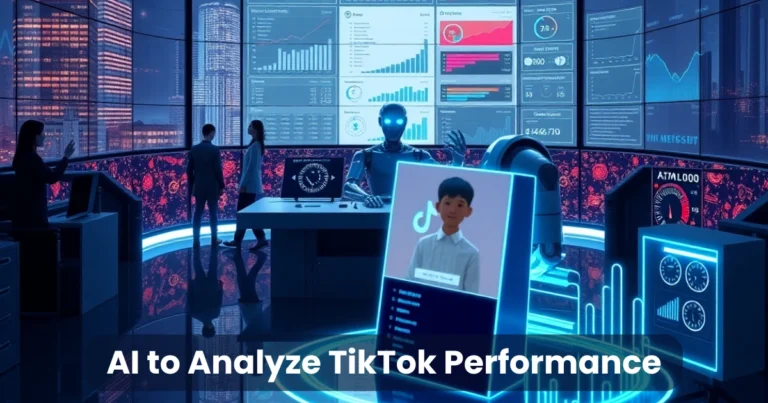Build Your Brand Role Stack with AI Tools in 2025

Contents
- 1 What Is a Brand Role Stack?
- 2 Why AI Tools Are Essential for Your Brand Role Stack
- 3 Key Components of a Brand Role Stack
- 4 Top AI Tools for Building Your Brand Role Stack
- 5 How to Build Your Brand Role Stack with AI Tools: A Step-by-Step Guide
- 6 Best Practices for Building Your Brand Role Stack with AI Tools
- 7 Challenges and Solutions When Using AI Tools
- 8 Case Studies: Brands Winning with AI-Powered Stacks
- 9 The Future of Building Your Brand Role Stack with AI Tools
In today’s fast-paced digital landscape, building your brand role stack with AI tools is no longer a luxury—it’s a necessity. Businesses and individuals alike are leveraging artificial intelligence to streamline workflows, enhance creativity, and drive brand growth. By integrating AI into your brand role stack, you can optimize tasks, personalize customer experiences, and stay ahead of the competition. This article explores how to effectively build your brand role stack using AI tools, offering actionable insights, practical tips, and a step-by-step guide to maximize efficiency and impact.
Whether you’re a marketer, content creator, or business owner, AI tools can transform how you approach branding. From content creation to data analysis, these tools empower you to scale operations while maintaining quality. Let’s dive into the essentials of building a robust brand role stack with AI, ensuring you harness its full potential to achieve your goals.
What Is a Brand Role Stack?
A brand role stack refers to the collection of tools, processes, and strategies that define and support your brand’s operations. It encompasses every aspect of branding, including content creation, social media management, customer engagement, analytics, and more. By incorporating AI tools, you can enhance each layer of this stack, making your brand more agile and responsive.
For example, a traditional brand role stack might include manual content creation, basic analytics tools, and human-driven customer support. However, an AI-powered stack integrates intelligent automation, predictive analytics, and personalized engagement, allowing you to achieve more with less effort. The result? A cohesive, efficient system that drives consistent brand growth.
Why AI Tools Are Essential for Your Brand Role Stack
AI tools are revolutionizing how brands operate. Here’s why they’re critical for building your brand role stack:

- Efficiency and Automation: AI automates repetitive tasks like content scheduling, data entry, and customer queries, freeing up time for strategic work.
- Personalization at Scale: AI analyzes customer data to deliver tailored experiences, boosting engagement and loyalty.
- Data-Driven Insights: AI tools provide actionable analytics, helping you understand audience behavior and refine strategies.
- Cost Savings: By automating tasks, AI reduces the need for large teams, saving time and resources.
- Scalability: AI enables brands to handle increased workloads without compromising quality.
By integrating AI, you’re not just optimizing your stack—you’re future-proofing your brand.
Key Components of a Brand Role Stack
Before diving into AI tools, let’s break down the key components of a brand role stack:
- Content Creation: Blogs, videos, social media posts, and ad copy that communicate your brand’s message.
- Social Media Management: Scheduling, posting, and engaging with audiences across platforms.
- Customer Engagement: Tools for email marketing, chatbots, and customer support.
- Analytics and Reporting: Tracking performance metrics to measure success and guide decisions.
- Design and Visuals: Creating logos, graphics, and other visual assets.
- Market Research: Understanding audience needs and market trends.
Each component benefits from AI integration, as we’ll explore below.
Top AI Tools for Building Your Brand Role Stack
To build an effective brand role stack, you need the right AI tools. Below, we’ve categorized the best tools for each component, ensuring you can maximize efficiency and results.

1. Content Creation
Content is the backbone of any brand. AI tools streamline content creation, ensuring high-quality output in less time.
- Jasper AI: Jasper generates blog posts, ad copy, and social media content based on your input. Its natural language processing capabilities ensure content aligns with your brand voice.
- Copy.ai: Ideal for short-form content like headlines, product descriptions, and email subject lines. It offers templates for quick content generation.
- Grammarly: Beyond grammar checks, Grammarly’s AI suggests tone adjustments and improves readability, ensuring polished content.
Tip: Use Jasper for long-form content and pair it with Grammarly for final edits to maintain consistency.
2. Social Media Management
Managing multiple social platforms can be overwhelming. AI tools simplify scheduling, posting, and engagement.
- Hootsuite Insights: This AI-powered tool analyzes social media performance and suggests optimal posting times.
- Buffer: Buffer’s AI schedules posts and analyzes audience engagement to maximize reach.
- Sprout Social: Offers AI-driven sentiment analysis to gauge audience reactions and tailor content.
Tip: Combine Buffer for scheduling with Sprout Social for deeper audience insights to optimize your social strategy.
3. Customer Engagement
AI enhances customer interactions by providing personalized, real-time responses.
- Drift: An AI chatbot that qualifies leads and engages website visitors 24/7.
- Intercom: Uses AI to automate customer support and deliver personalized messages.
- Mailchimp: Its AI features optimize email campaigns by predicting the best send times and segmenting audiences.
Tip: Use Drift for website chat and Mailchimp for email campaigns to create a seamless customer journey.
4. Analytics and Reporting
Data drives decisions. AI analytics tools provide insights to refine your brand strategy.
- Google Analytics 4: Uses AI to predict user behavior and track website performance.
- Tableau: AI-powered data visualization helps you understand complex metrics.
- Hotjar: AI-driven heatmaps and session recordings reveal how users interact with your site.
Tip: Pair Google Analytics with Hotjar to combine quantitative data with qualitative insights.
5. Design and Visuals
Visuals are crucial for brand identity. AI tools make design accessible, even for non-designers.
- Canva Pro: Its AI-powered design assistant suggests layouts and color schemes.
- Adobe Sensei: Integrated into Adobe tools, Sensei automates image editing and enhances visuals.
- Midjourney: Generates stunning AI art for branding, logos, and social media.
Tip: Use Canva for quick designs and Midjourney for unique, high-impact visuals.
6. Market Research
Understanding your audience is key to brand success. AI tools streamline market research.
- Brandwatch: Analyzes social media and web data to uncover consumer trends.
- Crayon: Tracks competitors’ online activity, providing insights to refine your strategy.
- SurveyMonkey Genius: Uses AI to design surveys and analyze responses.
Tip: Combine Brandwatch with SurveyMonkey to gain both broad market insights and specific audience feedback.
How to Build Your Brand Role Stack with AI Tools: A Step-by-Step Guide
Now that you know the tools, let’s walk through how to build your brand role stack with AI tools in seven actionable steps.

Step 1: Define Your Brand Goals
Start by identifying your objectives. Are you focused on increasing brand awareness, driving sales, or improving customer retention? Clear goals guide your tool selection.
- Example: If your goal is lead generation, prioritize tools like Drift and Mailchimp.
- Action: Write down 3–5 specific, measurable goals (e.g., “Increase website traffic by 20% in 6 months”).
Step 2: Assess Your Current Stack
Evaluate your existing tools and processes. Identify gaps where AI can add value.
- Example: If you’re manually scheduling social posts, an AI tool like Buffer can save time.
- Action: List your current tools and note inefficiencies or areas for improvement.
Step 3: Choose the Right AI Tools
Select tools that align with your goals and budget. Start with one or two tools per category to avoid overwhelm.
- Example: For content creation, start with Jasper and Grammarly.
- Action: Research tools, compare features, and sign up for free trials to test compatibility.
Step 4: Integrate Tools Seamlessly
Ensure your AI tools work together. Many platforms offer integrations to streamline workflows.
- Example: Connect Hootsuite with Google Analytics to track social media ROI.
- Action: Check for API integrations or use platforms like Zapier to connect tools.
Step 5: Train Your Team
AI tools require some learning. Invest time in training your team to maximize their potential.
- Example: Run a workshop on using Canva’s AI features for consistent branding.
- Action: Schedule training sessions or use online tutorials provided by the tools.
Step 6: Monitor and Optimize
Track the performance of your AI-powered stack. Use analytics to identify what’s working and what needs adjustment.
- Example: If Mailchimp’s AI suggests a send time that underperforms, test alternative times.
- Action: Set up weekly or monthly reviews to analyze metrics and refine strategies.
Step 7: Scale with Confidence
As your brand grows, scale your stack by adding advanced AI tools or upgrading existing ones.
- Example: Upgrade to Sprout Social’s premium plan for deeper analytics as your audience grows.
- Action: Reassess your stack every 6–12 months to ensure it meets your evolving needs.
Best Practices for Building Your Brand Role Stack with AI Tools
To maximize the impact of your AI-powered brand role stack, follow these best practices:

- Start Small: Begin with a few tools to avoid complexity. Gradually expand as you gain confidence.
- Prioritize Integration: Choose tools that integrate with your existing systems for a cohesive workflow.
- Focus on User Experience: Use AI to enhance, not replace, human creativity and connection.
- Stay Updated: AI evolves rapidly. Keep an eye on new tools and features to stay competitive.
- Balance Automation and Personalization: Use AI for efficiency but maintain a human touch in customer interactions.
Challenges and Solutions When Using AI Tools
While AI tools offer immense benefits, they come with challenges. Here’s how to address them:
- Challenge: High learning curve.
Solution: Invest in training and start with user-friendly tools like Canva or Grammarly. - Challenge: Data privacy concerns.
Solution: Choose tools with robust security features and compliance with GDPR or CCPA. - Challenge: Over-reliance on automation.
Solution: Regularly review AI outputs to ensure they align with your brand voice. - Challenge: Cost of premium tools.
Solution: Start with free or low-cost plans and scale up as ROI becomes clear.
Case Studies: Brands Winning with AI-Powered Stacks
Case Study 1: Small Business Success
A boutique e-commerce brand used Jasper AI for product descriptions, Mailchimp for email campaigns, and Canva for visuals. By automating content creation and personalizing emails, they increased sales by 15% in three months.
Case Study 2: Influencer Growth
A social media influencer integrated Buffer and Sprout Social into their stack. AI-driven scheduling and audience insights helped them grow their following by 25% in six months.
Case Study 3: Enterprise Efficiency
A tech company adopted Tableau and Brandwatch for analytics and market research. AI insights enabled them to refine their product launch strategy, resulting in a 30% increase in customer acquisition.
The Future of Building Your Brand Role Stack with AI Tools
The role of AI in branding is only growing. Emerging trends include:

- Generative AI: Tools like Midjourney will create more sophisticated visuals and content.
- Predictive Analytics: AI will forecast consumer behavior with greater accuracy.
- Voice and Conversational AI: Chatbots and voice assistants will enhance customer engagement.
- Hyper-Personalization: AI will deliver even more tailored experiences based on real-time data.
By staying ahead of these trends, you can ensure your brand role stack remains cutting-edge.
Conclusion
Building your brand role stack with AI tools is a game-changer for businesses and individuals alike. By integrating AI into content creation, social media, customer engagement, analytics, design, and market research, you can streamline operations, boost creativity, and drive growth. Start by defining your goals, choosing the right tools, and following best practices to create a stack that evolves with your brand. With AI, the possibilities are endless—take the first step today and transform your brand’s future.






